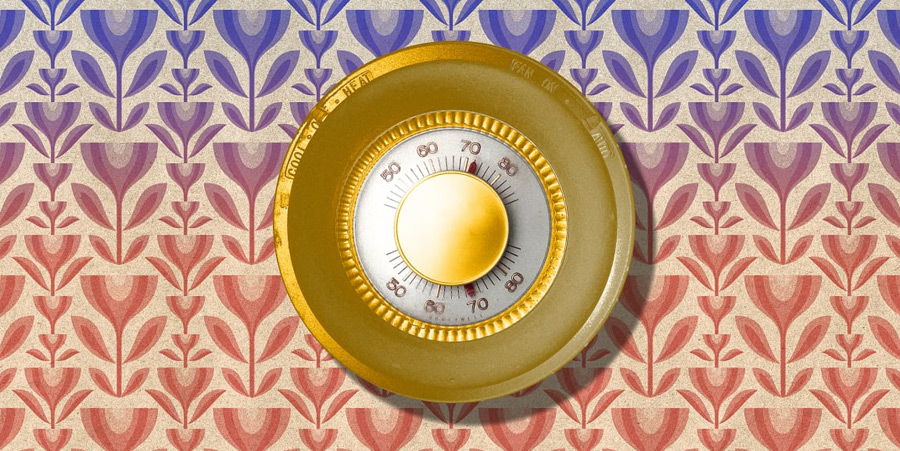When Americans travel abroad, one of the first things we notice is the different architectural styles—especially of traditional architecture—and perhaps even subtle differences, like the strangely different flooring materials in German airports. We also notice differences in expectations, and complain loudly about them. Why does every bathroom in this place feel stuffy, and why does my Brazilian buddy keep his house so hot?
These cultural differences in atmospheres are hard to explain to outsiders, but it’s clear that culture influences our expectations for the indoors. When I check in to a hotel room, my first mission is to turn off the fan on the air conditioning and unplug the mini-fridge, because the noise from these will keep me from sleeping. Many of my German colleagues have the same approach—which I learned from them—while most Americans don’t give this background noise a second thought. Our culture isn’t sensitive to noise from appliances and equipment, it’s just the background sound of being indoors.
Ask us if any temperature besides 72-74 degrees is comfortable for an indoors temperature, though, and many of us will insist it absolutely is not. Meanwhile many of my German friends are perfectly comfortable at 68 degrees, or 82 degrees—or both! Their climate certainly isn’t warmer than ours, so why are they wimps about sound while we’re wimps about temperature?
Unfortunately, when we insist on extremely tight temperature ranges or total silence in our buildings, there’s not much flexibility to create an indoors that engages with the outdoors differently. Physiologically, our experiences are the same across cultures, yet some of us accept—even celebrate—much less control over different aspects of the indoors. If some cultures have different expectations for temperature ranges, noise, or light levels, is it possible to shift cultural expectations?
Experience shows that it is possible. I’ll begin with an anecdote from a German colleague—let’s call him Franz—who spent a year with our team in New York. At the end of his year, Franz shared how his impression of ceiling fans—ceiling fans!—completely changed as a result of a summer in the New York heat. He used to visit Italy, see ceiling fans everywhere, and think to himself: “What a design failure! They have to install these fans everywhere because they can’t figure out how to keep cool!” You might have guessed: Ceiling fans are almost nonexistent in Germany.
We use a ceiling fan in our office, which allows us to be comfortable at higher air temperatures—say 80, 82, even 84 degrees. We also value keeping the windows open as long as possible before having to flip on the air conditioner. After his year, Franz’s thinking flipped: “Wow, the ceiling fan is fantastic, it allows us to keep the windows open for as long as possible!”
Japan’s rule-following culture makes these top-down initiatives possible, but such a shift might sound impossible in America’s culture of individual choice. Watch any movie from before 1970, though, and you’ll be reminded that smoke-filled rooms used to be completely acceptable. Between 1986 and 1999—just 13 years—workplace bans on smoking grew to cover more than 70% of all workers (having started at 3%). Comprehensive laws prohibiting smoking in workplaces, restaurants, and bars are now commonplace—so shifts in our expectations of the indoors are not only possible, they can swing so strongly that they become codified in our laws.
Cultural expectations can have impacts much greater than choice of summer office clothing. They can influence the floor plan of every building in the city. Germany’s Arbeitsstättenverordnung, a labor law defining requirements for workplaces, is ultimately determined by cultural norms for what makes an acceptable workplace. It requires that all work stations (any permanent desk or office) have a certain amount of daylight. In practice this means that windowless offices or desks far from the building exterior are prohibited. Every worker is guaranteed a workplace with access to natural light.
Most downtown American office towers, which rely on deep floor plans with many workers far from an exterior wall, come nowhere close to meeting this requirement. A culture that values a right to daylight results in buildings with a different floor plan, more shallow designs where everyone is close to a façade. Large, square, blocky buildings disappear from cities in a culture that codifies these values. There’s even a precedent for such requirements in the U.S.: Almost all American cities have similar requirements for residential construction, originally created in response to tenement housing.
Cultural expectations and norms have a tremendous influence on our indoor environment. Some aspects of culture are fixed, but others are fluid. Consider how American culture has shifted in the last 100, 50, or even 10 years, while our expectation for the indoor environment (smoking aside) has hardly shifted since the invention of air conditioning. Imagine how we can reimagine the indoors when we shift our cultural expectations.
This article first appeared in www.fastcompany.com




